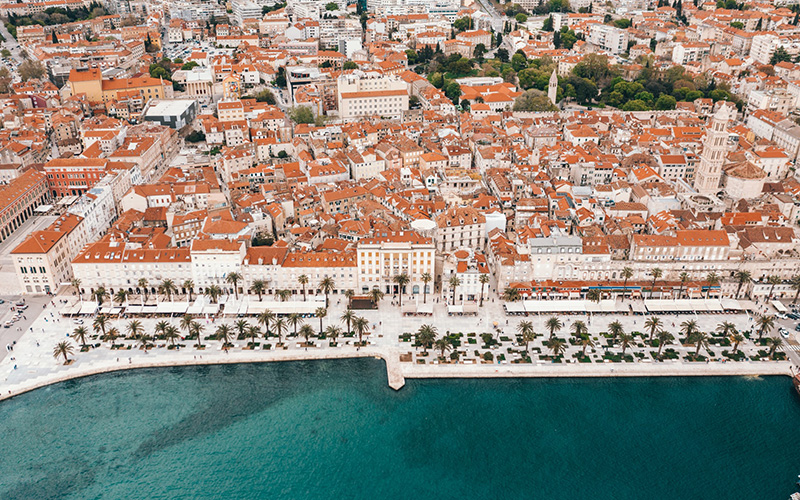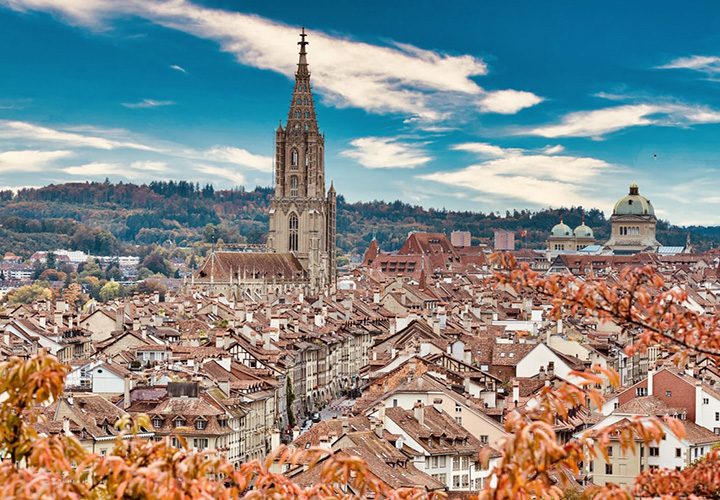Split
Split is a city located in the Dalmatia region and is the second-largest city in Croatia. It can be found to the south-east of the country on the coast overlooking the Adriatic Sea. Split has a very rich culture, with many naming it the centre of Croatian culture, with the centre of the city being named a UNESCO World Heritage site.

Details
Before visiting any town or city make sure you know the basics. General details and important information.
- Emergency Services: 112
- Language: Croatian
- Currency: Croatian Kuna
- Country Code: HR
- Travel Visa: None required
- Population: 176,314
Risk Level
Researching various official sources, we perceive the risk to holiday makers and travellers are as follows;
Travellers Tips
Top travel advice and interesting tip bits of information from experienced travellers.
Emergencies
For the Emergency services just dial 112 from any phone.
Hospitals in Split
Travelling Around
Airports
Train Stations
Split Safety
Could you share any safety tips?
It makes sense to watch your belongings in public places, especially train and bus stations in major cities.
If you’re on your own, you should be more guarded. Men are sometimes subject to “bar scams” and women can be pestered in cities.
Only carry as much cash as you need and if possible use a replaceable travellers debit card.
Are there any areas that I should avoid?
Since the hostilities ended in 1995, there remain an estimated 90,000 land mines in Croatia. However these are not to be found in areas visited by tourists. If you plan to hike consult locals before you go.
Avoid strip clubs at all costs as they are often run by shady characters who overcharge their guests and if you are unable to pay you can find yourself in a local hospital.
Be careful at night in the warren of streets in the Palace, as you are especially vulnerable here.
Local Traditions
Every culture has its customs and traditions, they have been handed down the generations and are always held in high regards by the local residents.
Annual Ceremonies
The Sinjska Alka is a chivalric tournament taking place annually since the 18th century, in the town of Sinj near Split. During the contest, knights ride horses at gallop along the main street and aim their lances at an iron ring hanging on a rope. The tournament rules, codified in a 1833 statute, promote ethics and fair play, and stresses the importance of participation in community life. Participants must be members of local families of Sinj and the Cetinska krajina region. The whole community helps to make, conserve, restore and reconstruct weapons, clothes and accessories to support the continuation of the tradition. The Sinjska Alka is the only remaining example of the medieval knightly competitions that were regularly held in Croatian towns until the nineteenth century.
Annual Events
Annual events allow a city come together for some amazing experiences. If visiting at this time, make sure you have your accommodation booked and are always aware of your surroundings when travelling around.
Split Events
This international nautical fair is held in the beautiful atmosphere of the city harbour of Split for one week in April. It is a great opportunity for lovers of the sea to visit the biggest nautical scene of the region. There are remarkable yachts on show, sales opportunities and nautical experiences on offer. With the Mediterranean sea lapping at the gates of the Diocletian Palace, you can enjoy an impressive stage with performances from the largest and most famous Croatian and international nautical brands and watch a spectacular parade of boats which is held on the final day of the show.
This unusual, but spectacular Flower Fair is held every year in Split in the beginning of May. What makes the event so unique is the place where it is held, in the basement of the Diocletian’s Palace, one of Split’s most important treasures. The basement alone is worth a visit, but when filled with beautiful and original flower exhibitions it makes the experience more memorable and enthralling. The contestants compete to make one of a kind flower decorations and bouquet arrangements which stay fresh in the cool air of these grand palace cellars.
The Split Summer Festival runs for about a month, from mid July to mid August and features open-air theatre, music and dance performances, all held at various venues around the city and in and around Diocletian’s Palace. It is the one of the most important cultural events in Croatia and more recently the program also includes film events, jazz concerts and street theatre. Together with local productions by the Croatian National Theatre in Split, the festival will host many musical, theatre and dance performances from Croatia and abroad.
Split Highlights
Are there any hidden gems worth visiting?
This cave is made up of two large chambers. The first, which was discovered in the 19th century, has no stalactites and the second was discovered in 1903 by Stipe Punda, the owner of this land. There is a series of nine smaller chambers in delightful colours, ranging from shades of green through to blue, some of which shimmer due to the presence of crystals. The cave is 360m long in total and holds a constant temperature of 15ºC all year. Vranjaca is popular for visits by tourists and has steps with rope handrails, raised walkways and atmospheric lighting, with tours led by local guides. The cave at is located in the foothills of the central part of Mosor, on its northern side.
Marjan is a hill on the peninsula of the city of Split, which is covered in a dense Mediterranean pine forest and completely surrounded by the city and the sea. Originally used as a park by the citizens as early as the 3rd century, it is a favourite weekend excursion destination and a recreational centre for the city. It is also the setting for numerous beaches and jogging trails as well as tennis courts and the city zoo, all surrounded by scenic forest. Marjan Hill is 178 m tall and offers a view of the entire city, the surrounding islands, and the nearby mountains of Mosor and Kozjak.
Urban expansion of the city west of the Iron Gate, made for the relocation of the main square from east to west. The new main square is formed in the area where once stood the church of St Lawrence. It contains important buildings such as the Rector’s Palace complex with Communal Palace and the Town Hall and the municipal theater with a dungeon. Today the square is paved in white marble and is surrounded by historic buildings with cafes and restaurants.
What are some of the best places to visit?
Diocletian built this massive palace in preparation for his retirement on 1 May 305 AD. It is situated in a bay on the south side of a short peninsula running out from the Dalmatian coast, four miles from the capital of the Roman province of Dalmatia. The Romans eventually abandoned the site and the Palace was then empty for several centuries, until the 7th Century when nearby residents fled to the palace to escape invading Slavs. Since then the palace has been occupied, with residents making their homes and businesses within the basement and in its walls. The palace, as with all the important historical buildings of Split is in the city centre. Diocletian’s Palace transcends its local importance due to its unusually good preservation and is one of the most famous and complete architectural features on the Adriatic coast. It is the world’s most complete remains of a Roman palace, holding a place in world heritage.
Split waterfront is a public, open space which is 1700 years old and lies in front of Diocletian’s Palace. The modular Roman form of the palace is reflected in the new modular network of concrete elements laid on Riva and the arrangement and positions of other elements of the area. 250 meters long and 55 meters wide, it is also a main public square, which hosts all kinds of social events, promenades, shopping and dining.
Twelve sphinxes were brought to Split after Emperor Diocletian put down a rebellion in Egypt in around the year 297. Unfortunately of this twelve, only one survives today and it stands at the Peristyle. This sphinx on the Peristyle is made of black granite and dates from to the period of pharaoh Tuthmosis III, who lived from 1479 until 1425 BC. It is carved with a vessel for offerings in its hands. Like a lot of the palace itself, the sphinxes were decapitated and destroyed when Christianity arrived and that this one survived is a mystery.





